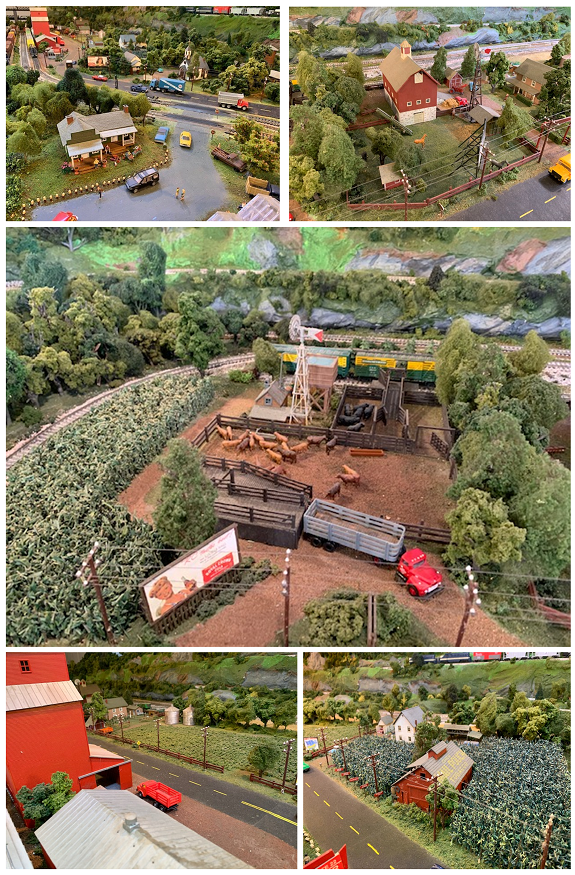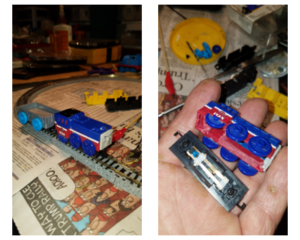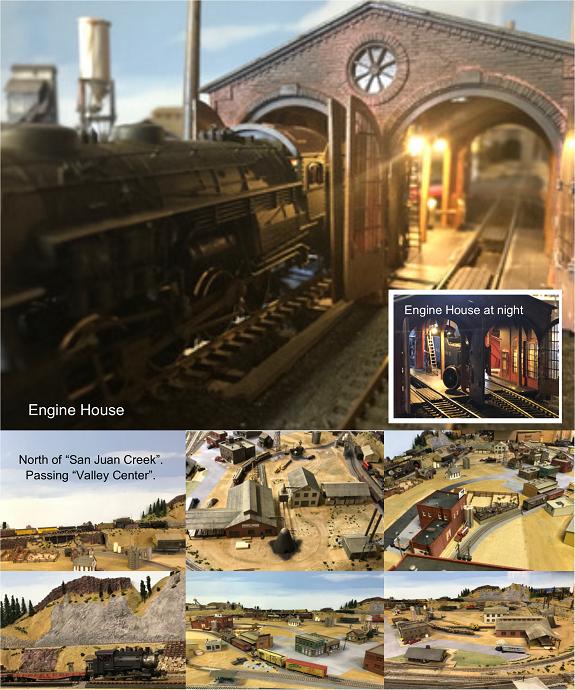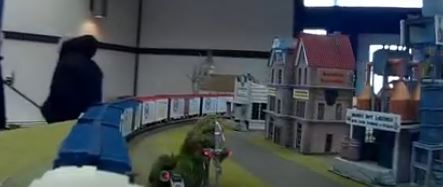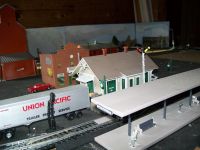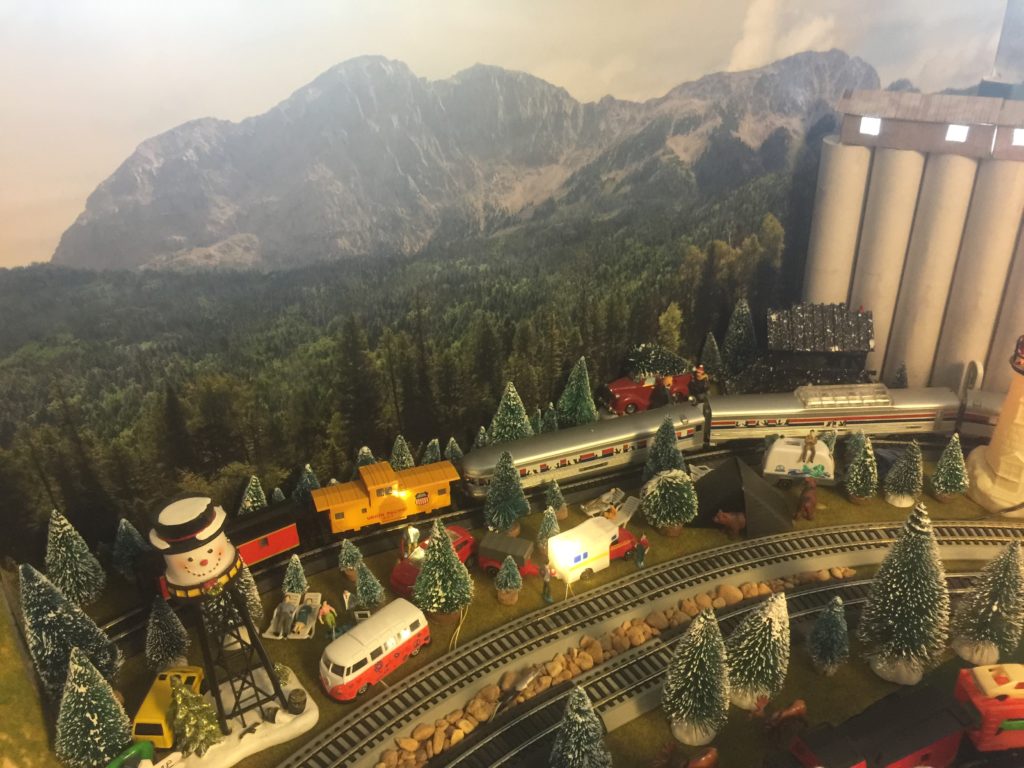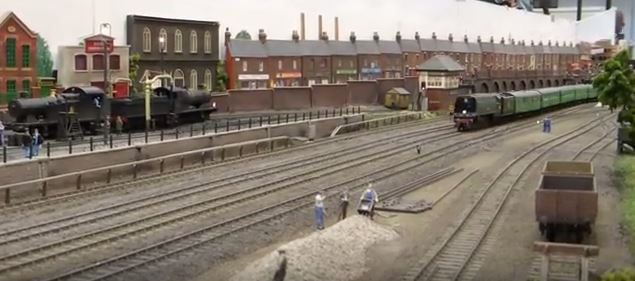Everything on model trains, model railroads, model railways, locomotives, model train layouts, scenery, wiring, DCC and more. Enjoy the world's best hobby... model railroading!
Using Non-Macklin Equipment on Noch Layout?
David models HO and writes:
“I am looking to buy a used Noch layout from 1972. Can I run standard HO scale equipment which is not Marklin on this layout, and will the Marklin transformers power them? Thanks.”
Submit your question for publication.
Program Track
Steve asks:
“I’m new to DCC (running NEC). What’s the difference between programing on the main and programing track? I run a 8X4 HO layout.”
Add your answer below.
3 Way Turnout Problem
Christopher writes:
“I have an HO DCC layout and a 3 way turnout using it as a reverse loop but it shorts out coming out of the return route. Will a hex frog juicer solve this problem? If so how would I hook it up?”
Add your comment.
Connecting Power Pack Leads To DCC Wired Layout… How? Where?
Rowan asks:
“Hi all, I know my layout I got from my late Poppa is wired for DCC, but he gave away his DCC locomotives a year or so ago to a good friend he had. That’s why I don’t have a DCC equipped locomotive. If I want to test things, how would I hook up an old DC power pack, I have one, on the layout to test the operation of a non DCC equipped loco? I had a go at connecting the two DCC leads to the DC hookups on the old power pack but that didn’t work. How and where should I connect the two power leads from my 12v power pack to my DCC wired layout so I can operate a DC locomotive, as I have a couple? I don’t have a DCC control of any kind connected. I know my question might sound stupid to you guys who know all this stuff, but I am a bit challenged on this to say the least. Do I need a volt meter thingy too?”
If you can assist Rowan, or want to watch the answers as they come in, just click on the COMMENTS link below.
Cheap To Make Cleverly Designed Extendable Buildings
Here’s a way to extend the background scene on a model train layout without blowing the budget. There are several plans to download that are designed to be easily joined together extending the background display. The first two warehouses pictured in this video are good examples. There are several other plans for extendable background buildings available from our blog sponsor https://www.modelbuildings.org
Pete Share Photos Of The Farm House and Barn He Constructed
“Here is a farm house and small hobby barn diorama I have been busy working on during this virus lock down .. hope you like them and feel free to share. I have many more I have done also. This one is what I started with on a base after weathering the buildings and as it progressed. I am going to use them on my free-mo modulus. Although I am an amateur modeler, I try to capture and add as much detail as possible. I hope you enjoy my work so far. Take care be safe.”
Kit Bashing Kids Toys with Kato
Steve contributed this idea:
“Given all the home time I wanted to share what I’ve done with a Mattel and Fisher Price Thomas trains , I’ve disassembled them , and cut open the frames and installed Kato 4 wheel drives into them so they can run on N scale track. I’ve also done the same with the minis and put Rokuhan drives in for Z scale makes for one of a kind trains that can’t be brought in the store and a good way to get little kids interested in model railroading.”
Running with Digitrax
Lloyd asks:
“I have an HO layout and I have had it up for about 6 years. I have not been able to run it for the last two years. My problem is I can not remember what I have to do to get it running. I have about 10 engines with each having its own number. I am 74 and have not been able to work on it because of an illness. I would like to return to the pleasure of running the trains. Thank you for any help.”
Add your suggestion and view comments below.
Is N Gauge Suitable for 76 Year Old Restricted to 6ft x 3ft Space?
Howard K asked:
“In my last home I had a big space for a layout and got about a quarter way through constructing a 12ft x 5ft HO layout. Unfortunately I got health issues and so we moved to a warmer climate and because I hadn’t spent much on trains etc I sold everything. That was 5 years ago. Now my health is much improved, but at 76 I don’t want to start a big new project, and don’t have the space. Maybe enough space for a 6ft x 3ft layout at a push. With the smaller space I have been thinking about maybe going N gauge instead, but wonder if it might be too fiddly for my shaky old hands and not so sharp eyes? Has anyone of my age got N gauge? What’s the general view on which way I should go. I do want an interest and want to get back into the hobby. Advice please.”
Add your comments to assist Howard, or use the ASK A QUESTION link to submit your own question for publication.
Joe Shares Photos of His San Juan Creek 12ft x 8ft Layout
Joe Graffi has kindly sent in some photos of his layout to share, and writes:
“I model in HO and these are some recent shots of the 12’x8’ layout. The time is late steam, prior to 1950 in the area of N.W. New Mexico & S.W. CO. Most of the landscaping is from photos I took along the Cumbres & Toltec. The town is San Juan Creek and is supported by: San Juan Lumber Co. and San Juan Coal, as well as Talones Packing Co. (cattle) and Ochs Oil Distribution). The local railroad is “San Juan & Central”. The “Santa Fe” passes through and has a station at Grants N.M.”
The bottom left photo shows a 0-6-0 with a consist of empty flats just past the planning mill. Joe makes all of his own decals.
Install a 5 Pole Motor
Rudy asks readers:
“ I have a much loved Fleischman, 4065 class 65018 steam engine. Is it possible to install a 5 pole motor into this engine? It’s still almost new, but I’ve noticed a big difference between it’s 3 pole, and the 5 pole motor in my other engine, since I like running “dead slow”… Is such a motor even available since it seems to be vertical in design?”
Add your comment or suggestion to help Rudy below.
South Hills Model Railroad Club Modular HO Layout – Scott Township – Pittsburgh
Richard shares this info – “Our model railroad club (South Hills Model Railroad Club) in Pittsburgh does 4 events a year displaying our modular layout. This scene is from onboard a train at the March 2019 show.”
Charles Shares A Photo of His 8ft x 4ft Loop
“Hi all; I have been reading this Blog for a couple of years and have used several of the comments and suggestions towards my work. I have a 4’X8′ HO loop with a couple of turnouts. I also do Pizza Box N scale and T-Track. It’s not much but between the clubs I belong to and sites like this I have to say I’ve made a real Mess!” Charles Treft
Hendrik Shares A Scene From His 11ft x 5ft HO Layout
A small scene at one end of my HO setup (11×5 Ft). It shows the Bear Mountain Camp ground with bears chasing two people on the top of a camper and coming out of a tent. They are surrounded by other campers relaxing on loungers and keeping social distancing. Four main tracks cut through the forest and trees with mountain background and storage silo. I have two steam engine trains (passenger and freight train), a Diesel engine freight train and an Acela electric passenger train that keep me busy, staying at home. Stay safe and healthy.
Shane Shares Photo From The Great Electric Train Show
Shane from Buckinghamshire in the UK writes:
“Hi Robert, a great suggestion from you to send in photos and ideas to share at a time when we all need perking up. Here’s a photo I took at The Great Electric Train Show. It’s a scene I really liked and hope it heartens fellow modellers from around the world.”
Inspire Others With A Photo Of Your Layout, or Share a Clever Tip On This Blog
Most of the world is stuck indoors, but we in the model railroading community share a wonderful common interest in the world’s greatest indoor hobby. I have friends that usually fill in their days gardening, or playing golf or tennis, and apart from perhaps watching TV or reading a book, have no indoor hobbies to keep them busy. They are doing it particularly tough, as are those who have been personally touched by the sad loss of a love one or friend.
Although it would be great to instantly return to life as normal, at the moment we all just need to hunker down and make the best of a bad situation. I know model railroading could be seen by many as a form of escapism, but we all need to stay strong, healthy and sane as we stay safe whilst hoping and praying for the return of better times. Keep busy and hopefully the days will pass by quicker and with a little less boredom and worry.
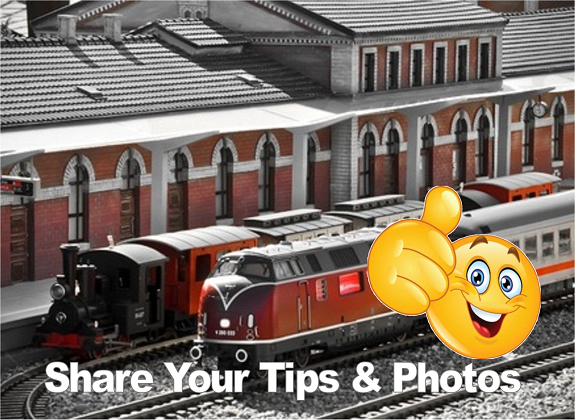 Helping others is also a great way to stay in touch and keep positive. That’s why I would welcome any articles, tips, layout photos you can share on this community blog. Send in your suggestions and tips by using one of the many ‘Ask a Question’ links on this page. If you have a photo to share (only one per person please), let us know in the same way and we will let you know how to email it to us for publication. Share a photo and a few words about your favorite locomotive, or a piece of scenery you are working on or completed, or a building you are constructing. I’m sure others would like to see what you are up to.
Helping others is also a great way to stay in touch and keep positive. That’s why I would welcome any articles, tips, layout photos you can share on this community blog. Send in your suggestions and tips by using one of the many ‘Ask a Question’ links on this page. If you have a photo to share (only one per person please), let us know in the same way and we will let you know how to email it to us for publication. Share a photo and a few words about your favorite locomotive, or a piece of scenery you are working on or completed, or a building you are constructing. I’m sure others would like to see what you are up to.


